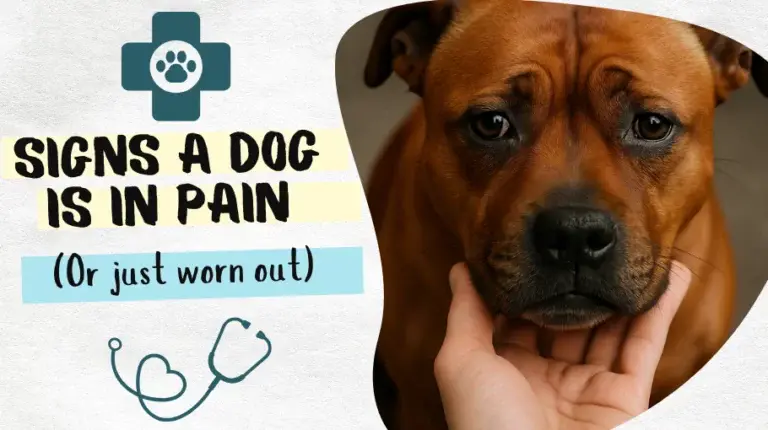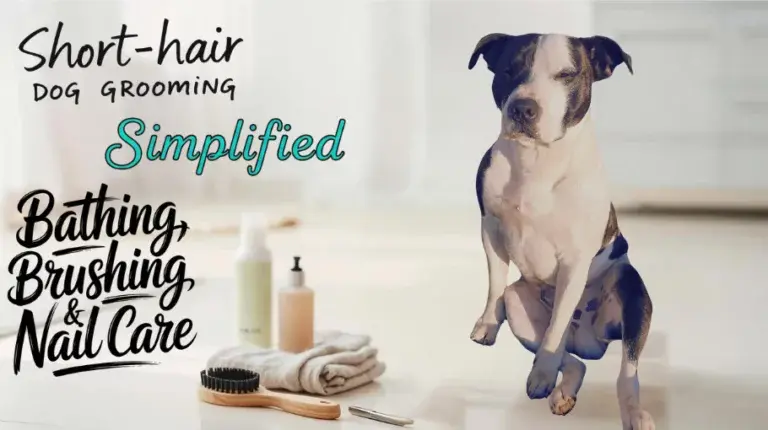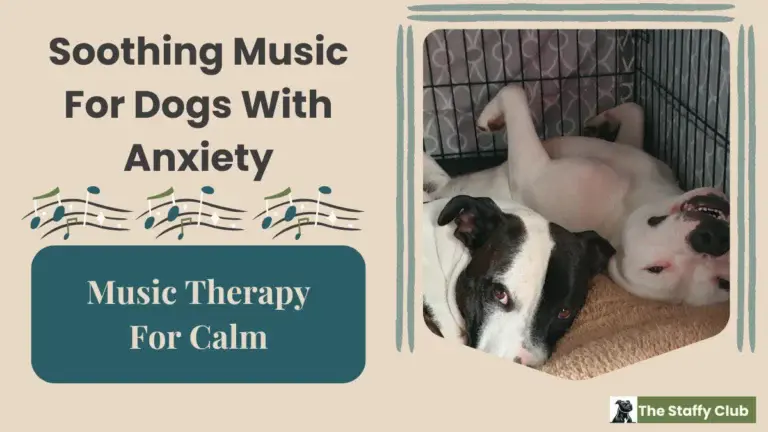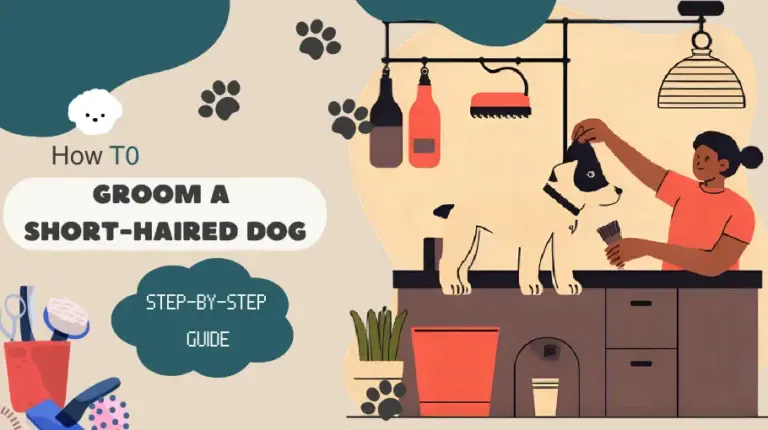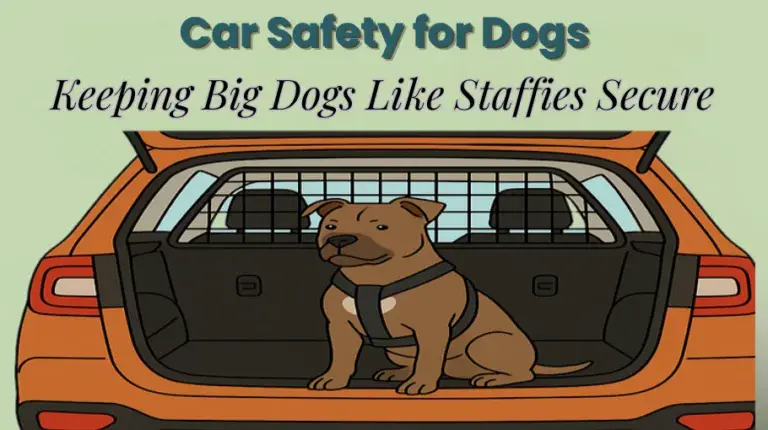How Often Should You Brush Your Dog? A Guide for Short, Long, and Double Coats
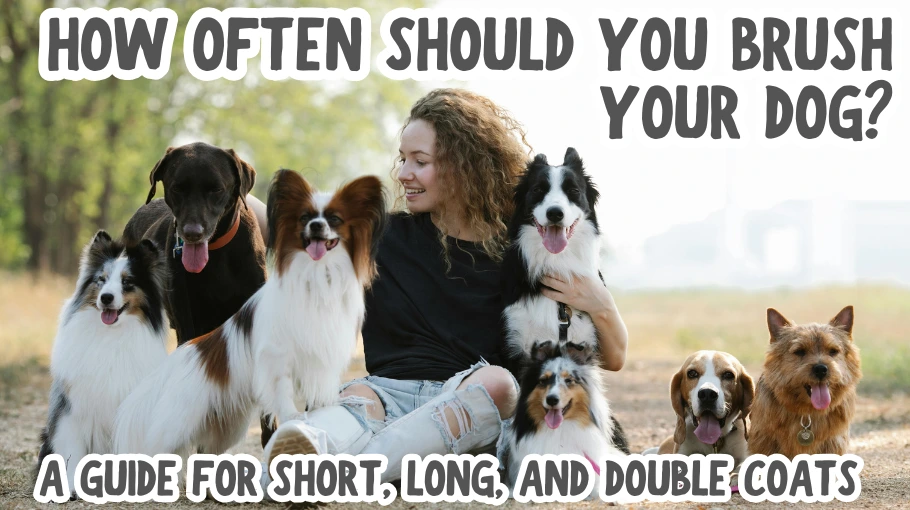
Thick or thin, short or long, single or double coated… every dog benefits from brushing. The real question is how often should you brush your dog? The answer isn’t one-size-fits-all, and that’s where things get nuanced.
First, why trust this guide?
Because it’s based on first-hand experience. While my focus is Staffordshire Bull Terriers, I’ve also cared for a German Shepherd through full-blown casting season. Even my short-haired white Staffy surprises me with how much hair he sheds… it’s everywhere, despite the coat being “low maintenance.”
What You Need to Know about Brushing Your Dogs Coat
The Reality: Dog Brushing Routines Differ by Coat Type
That’s the key—how often you brush really depends on your dog’s coat type. A short-haired Staffy, a long-haired Collie, and a double-coated German Shepherd all have very different needs. Find the right balance for your dog, and you’ll keep their coat healthy, your home cleaner, and your dog far more comfortable.
Why Brushing Matters
There’s more to brushing than meets the eye… or the hairs that end up on your carpets, rugs, sofa, or even dust on your TV and mirrors. For some, brushing is bonding time; for others, it’s simply maintenance. The facts are that every brushstroke helps prevent mats and tangles while distributing natural oils across your dog’s coat, giving it a healthy, glossy sheen.
For a fuller look at all the advantages, check out our comprehensive list of dog grooming benefits.
Short-Haired Single-Coat Dogs (Staffies, Boxers, Dobermans etc.)
We have two Staffies, both short-haired, but one is particularly thick for the breed. He’s one hairy dog—it feels like he’s shedding year-round. The white coat makes it extra obvious, appearing on everything from carpets to clothes.
How often to brush a short-haired dog?
Typically, once a week is enough to stay on top of shedding and keep the coat healthy.
What to use: A soft-bristle brush or a rubber curry brush.
What to avoid: De-shedding brushes (meant for double-coat breeds) and wire brushes.
For dogs with sensitive skin, a soft brush is essential to prevent irritation or discomfort.
If your dog has a longer coat or is prone to tangles, the routine and tools you’ll use will look a bit different…
Medium and Long-Haired Dogs (Spaniels, Collies, Setters, etc.)
Medium and long-haired dogs require a bit more attention than short-haired breeds. Their coats are prone to tangles and mats, and debris can easily get trapped in the fur. Ever watch them licking their coats and wonder what they’re actually licking? Eugh!
A little intervention with a brush can keep their coat cleaner, healthier, and prevent discomfort.
How often to brush:
2–3 times per week is a good starting point. Daily brushing may be needed during shedding season or if your dog spends a lot of time outdoors.
What to use:
Slicker brushes, pin brushes, or combs designed for detangling. A quality dematting comb is handy for stubborn knots.
Tip: Brush before a bath to prevent mats and tangles from worsening when wet. Don’t risk cutting off what could have been brushed out.
What to avoid:
Avoid wire brushes that can scratch or irritate the skin, and stay away from de-shedding tools meant for double-coated breeds—they’re not effective for medium/long single coats.
Regular brushing prevents tangles from turning into mats and keeps your dog’s coat looking healthy. Consistency is key—neglecting the routine makes grooming more difficult later and can be uncomfortable for your dog.
For dogs with an even denser coat, like German Shepherds or Huskies, brushing isn’t just about preventing tangles on the surface—the undercoat needs attention too.
Double-Coated Breeds (German Shepherds, Huskies, Retrievers, etc.)
If your dog has a double coat, the grooming game changes again. Unlike medium and long-haired single coats, double coats have a dense undercoat beneath a top layer of guard hairs. Shedding is heavier, and mats can form deep down if not addressed.
How often to brush:
Daily brushing is ideal during shedding season, often called the “blowing coat,” when the undercoat loosens to adjust to seasonal temperature changes. Outside of shedding season, aim for 2–3 times per week. Focus especially on the undercoat to prevent mats and control loose hair.
What to use:
Undercoat rakes, slicker brushes, and de-shedding tools are essential for reaching the dense undercoat. A detangling spray can help loosen knots, particularly if the coat is damp or has stubborn tangles.
What to avoid:
Avoid soft-bristle or rubber brushes that cannot reach the undercoat. Wire brushes may be uncomfortable if used carelessly. Shaving should only be done if recommended by a veterinarian for a medical reason, such as mange, severe mats, or to help an aging dog struggling to shed due to hormonal changes.
Double-coated breeds require more effort, but consistent brushing keeps your dog comfortable, reduces shedding, prevents mats deep in the coat, and avoids unnecessary risks like shaving or skin irritation.
Lifestyle Factors That Affect Routine
Even with breed and coat type in mind, a few lifestyle factors can influence how often you need to brush your dog.
Indoor vs outdoor dogs
Dogs who spend most of their time outdoors, especially in kennels, may pick up more dirt, debris, and loose hair, requiring more frequent brushing. Even garden time can leave small bits of leaves or pollen in the coat. Our dogs are indoor sleepers with garden access, and a quick brush once weekly keeps things manageable with our Staffies (short-haired dogs)
Carpets vs hardwood floors
Homes with carpet can make shedding more obvious. Regular brushing helps gather loose hair in one spot, making vacuuming quicker and easier. Hardwood or tile floors are easier to keep clean, but brushing still prevents hair from accumulating on furniture and clothing.
Allergies in the household
Even without allergies, dust and dander can be a nuisance, especially if guests are visiting. More brushing = less dander floating around, and your guests won’t leave sneezing or covered in dog hair.
Energy level of your dog
Active dogs tend to shed more, while mellow or senior dogs may shed very little. For example, our late senior Staffy barely shed in his later years, so brushing frequency was reduced. Observing your dog’s activity and shedding patterns helps set a routine that’s right for them.
Signs You’re Brushing Too Much (or Wrong)
The best indicator that your dog has had enough is usually their reaction. If they shy away, squirm, or seem uncomfortable, it’s time to stop. Brushing should be a pleasant experience… more like a bonding session than a chore for either of you.
Red, irritated skin or the use of a brush that isn’t suited to their coat can also cause discomfort, so always pay attention to how your dog responds.
Choosing the Right Brush for the Job
For short-haired dogs, the best dog grooming brushes are a rubber curry brush, or for sensitive skin, go with a soft bristle brush. Natural boar bristles are good for short haired breeds, whereas medium and long-haired dogs do better with a hybrid of nylon/boar mix for a firmer brush.
Double-coated breeds are best brushed with either a slicker brush, an undercoat rake, or a de-shedding tool, along with a detangling spray.
Establishing the Right Routine
There’s no one-size-fits-all schedule for brushing your dog. While it’s helpful to have a baseline depending on coat type, real life often changes the plan. If your dog goes rolling in mud, splashes in the sea, or has a beach run, brushing and possibly a bath will be needed outside the usual routine.
Start with a manageable schedule—maybe once a week for short-hair dog grooming, a few times for longer or double coats—and adjust as needed. Having your brushes and tools ready means you can respond quickly, keep the coat healthy, and make grooming a positive experience. On days your dog stays relatively clean, it’s an extra chance to bond, rather than a chore.
Final Thoughts: Brushing for Health, Comfort, and Bonding
How often you should brush your dog really comes down to coat type, lifestyle, and paying attention to their individual needs. Short-haired breeds like Staffies may only need a weekly brush, while medium, long-haired, and double-coated dogs benefit from more frequent attention—especially during shedding season.
The key is consistency and using the right tools. A quick brush not only keeps your dog’s coat healthy and comfortable, it also keeps your home cleaner and gives you both a chance to connect. Think of brushing as part of your regular care routine, adaptable to muddy walks, beach days, or quiet weeks when less is needed.
At the end of the day, brushing isn’t just maintenance—it’s bonding. Done right, the sight of the brush will have the dogs tail wagging in anticipation. It’s something your dog will look forward to, and you’ll both benefit from the time spent together.
FAQs About Brushing Your Dog
How do I stop my dog’s fur from matting?
Mats form when tangles are left unchecked, especially in medium, long-haired, or double-coated breeds. Regular brushing is the best prevention—before tangles get a chance to set in. Using the right brush for your dog’s coat type makes a big difference, and a detangling spray or comb can help with stubborn knots. For severe mats, seek help from a professional groomer rather than trying to cut them out yourself.
Should I shave my dog?
Professional groomers warn against shaving double-coated dogs because it can cause long-term damage. Dogs should generally only be shaved for medical reasons (such as mange, severe flea infestation, or heavily matted fur). The undercoat is part of your dog’s natural insulation—it keeps them warm in winter and helps them stay cool in summer. Regular brushing improves airflow to the skin, which is a far safer way to help your dog regulate temperature.
Will brushing make my dog’s coat shiny?
Yes. Brushing spreads natural oils through the coat, which helps it stay shiny and healthy. It also removes dust, dander, and loose hairs that can make a coat look dull.
What causes dog hair clumps?
Clumps are usually mats forming from loose hairs tangling together. They can build up faster in double-coated or long-haired dogs, or if a dog gets wet and isn’t brushed afterward. Regular brushing prevents dog hair from clumping, and keeps the coat smooth.

